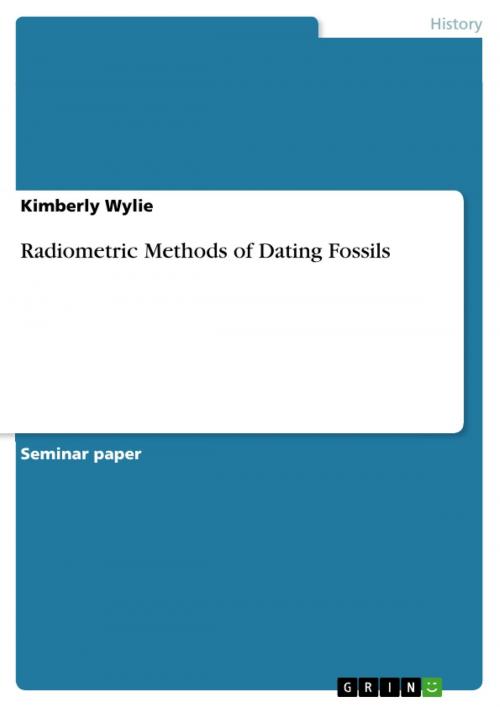Radiometric Methods of Dating Fossils
Nonfiction, Social & Cultural Studies, Social Science, Archaeology| Author: | Kimberly Wylie | ISBN: | 9783638521161 |
| Publisher: | GRIN Publishing | Publication: | July 16, 2006 |
| Imprint: | GRIN Publishing | Language: | English |
| Author: | Kimberly Wylie |
| ISBN: | 9783638521161 |
| Publisher: | GRIN Publishing |
| Publication: | July 16, 2006 |
| Imprint: | GRIN Publishing |
| Language: | English |
Seminar paper from the year 2004 in the subject Archaeology, University of Phoenix, 5 entries in the bibliography, language: English, abstract: Today, most of the methods utilized for chronometric dating of fossils are radiometric. Radiometric dating, in general, refers to the dating of material by using the known rate at which certain radioactive isotopes decay, or at what rate there are collective changes due to radioactivity. Even though isotopes of an element can be different when it comes to atomic mass, the atomic number of the isotope is always the same. Radioactive elements decay at unique rates, dependant on the isotope. This rate of decay is known as half-lives, it is the time necessary for ½ of the atoms to decay in a particular element. The decay follows a geometric scale, in that in the first half-life of an element, ½ of the atoms decay, yet in the second half-life, ½ of those remaining decay, meaning a ¼ of the original atoms decay, and so forth. By measuring this decay, and knowing the half life of an element, scientists can date a sample.
Seminar paper from the year 2004 in the subject Archaeology, University of Phoenix, 5 entries in the bibliography, language: English, abstract: Today, most of the methods utilized for chronometric dating of fossils are radiometric. Radiometric dating, in general, refers to the dating of material by using the known rate at which certain radioactive isotopes decay, or at what rate there are collective changes due to radioactivity. Even though isotopes of an element can be different when it comes to atomic mass, the atomic number of the isotope is always the same. Radioactive elements decay at unique rates, dependant on the isotope. This rate of decay is known as half-lives, it is the time necessary for ½ of the atoms to decay in a particular element. The decay follows a geometric scale, in that in the first half-life of an element, ½ of the atoms decay, yet in the second half-life, ½ of those remaining decay, meaning a ¼ of the original atoms decay, and so forth. By measuring this decay, and knowing the half life of an element, scientists can date a sample.















